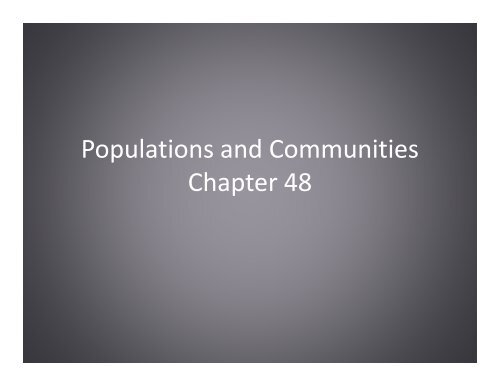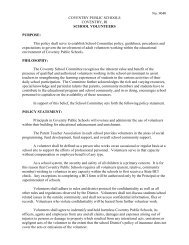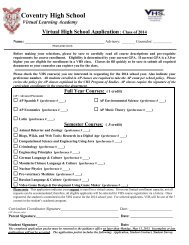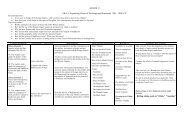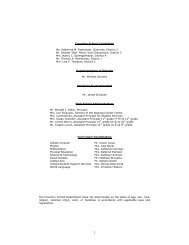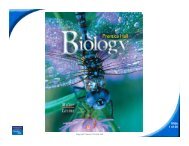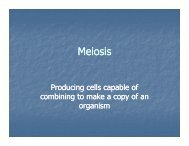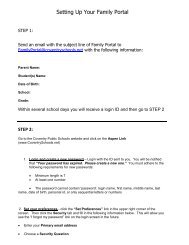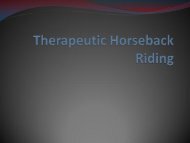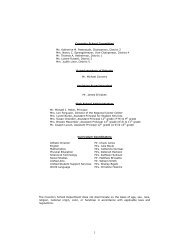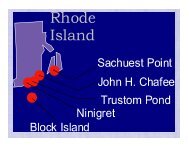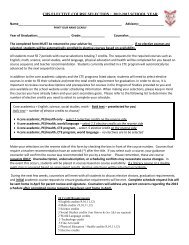Populations and Communities Chapter 48
Populations and Communities Chapter 48
Populations and Communities Chapter 48
You also want an ePaper? Increase the reach of your titles
YUMPU automatically turns print PDFs into web optimized ePapers that Google loves.
<strong>Populations</strong> <strong>and</strong> <strong>Communities</strong><br />
<strong>Chapter</strong> <strong>48</strong>
<strong>48</strong>-1 Population Growth<br />
• Population – a group of organisms that all<br />
belong to the same species <strong>and</strong> live in a given<br />
area.<br />
• Almost any organism provided with ideal<br />
conditions for growth <strong>and</strong> reproduction will<br />
experience a rapid increase in its population.
Exponential Growth Curve<br />
• The larger a<br />
population grows<br />
the faster it will<br />
grow; unless<br />
something acts to<br />
slow that growth.
Logistic Growth<br />
• <strong>Populations</strong> go through<br />
growth stages<br />
– Initially they grow slowly<br />
(I)<br />
– Then grows rapidly (II)<br />
• Few animals are dying<br />
– Growth slows (III)<br />
• But birthrate still exceeds<br />
deathrate<br />
– What is happening at<br />
(IV)?<br />
(Steady State)<br />
III<br />
IV
Carrying Capacity<br />
• Biological Carrying<br />
Capacity<br />
– Number of organisms<br />
able to be supported in<br />
an ecosystem<br />
• Cultural Carrying<br />
Capacity<br />
– Number of organisms<br />
society is willing to let<br />
exist
Factors Effecting Carrying Capacity<br />
• Lack of food<br />
– Nutrients for maintenance <strong>and</strong> growth<br />
• Space<br />
– Area to feed in<br />
• Lack of water<br />
– Necessary for everyday life<br />
• Loss of habitat<br />
– Without cover nothing feels safe
Review Quiz<br />
• A kind of growth curve shown in the picture<br />
below is a
Logistic Growth Curve
• Once a population goes over a steady state it<br />
is said to over its ___________________.
Carrying Capacity
• Several factors will affect the carrying capacity<br />
of an ecosystem. Name three.<br />
– __________<br />
– __________<br />
– __________
• Lack of food, lack of water, deathrate exceeds<br />
birthrate, loss of habitat <strong>and</strong> loss of cover.
<strong>48</strong>-2<br />
Factors That Control Population<br />
Growth
Limiting Factors<br />
• Density-dependant<br />
• Affect large populations<br />
– Examples<br />
• Competition for available resources<br />
• Overcrowding<br />
• Predation<br />
– Predator - Prey<br />
• Parasitism<br />
– Host lives<br />
– Examples<br />
» Fleas, ticks, tapeworm
Total World Population<br />
http://www.worldmapper.org/display.php?selected=2
Density of the World Population<br />
http://www.mapsofworld.com/world-population-density.htm#
Density-Independent Limiting Factors<br />
• Natural Disasters<br />
– Weather Related<br />
• Ice-storm<br />
• Snowstorm<br />
• Dry/hot weather<br />
• Rain<br />
• Hurricanes<br />
• Tornadoes
<strong>48</strong>-3 Interactions Within <strong>and</strong><br />
Between <strong>Communities</strong>
Symbiosis<br />
• A relationship between two organisms where<br />
one of the organisms benefits<br />
• Sym = together<br />
Bio = life<br />
• Commensalism<br />
• Mutualism<br />
• Parasitism
Commensalism<br />
• One benefits while the other is unharmed<br />
– Examples<br />
• Sea anemone <strong>and</strong> shrimp<br />
• Orchid <strong>and</strong> tropical tree<br />
• Sharks <strong>and</strong> Remoras<br />
• Birds nesting in trees
• Both organisms benefit<br />
Mutualism<br />
– Termite <strong>and</strong> Protista<br />
– Sea Anemone <strong>and</strong><br />
Clownfish<br />
– Human <strong>and</strong> [B 12 ]<br />
Bacterium in intestines<br />
– Ants <strong>and</strong> Acacia trees
• One benefits; the other<br />
harmed<br />
– Most don’t kill their<br />
host<br />
– Flea <strong>and</strong> dog / cat<br />
Parasitism<br />
– Tick <strong>and</strong> mammal<br />
– Leech <strong>and</strong> fish / human<br />
– Lamprey <strong>and</strong> fish
Quiz<br />
• What is the main difference between density<br />
dependent <strong>and</strong> density independent limiting<br />
factors?<br />
• Name two density dependent limiting factors.<br />
• What is a symbiotic relationship?<br />
• Name a type of Symbiotic relationship <strong>and</strong><br />
give two examples?


